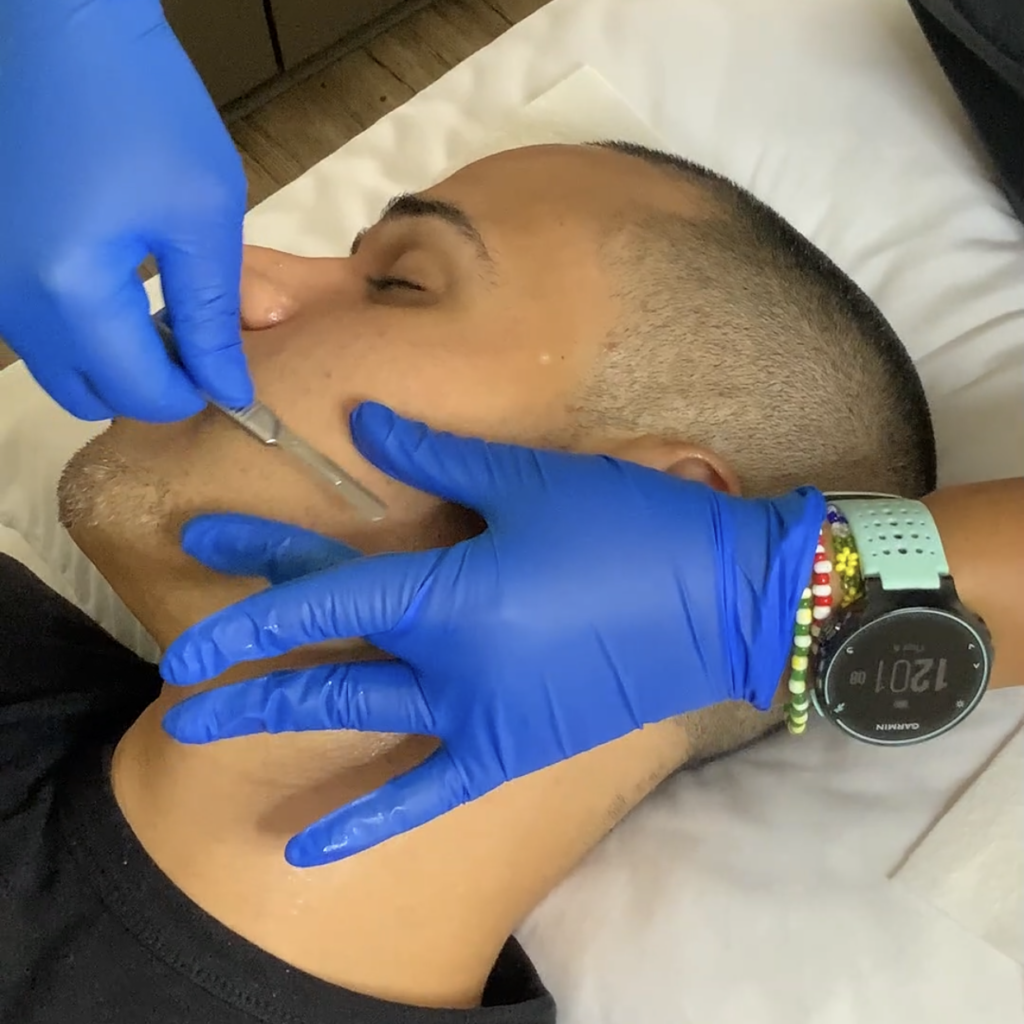

Dermaplane
Dermaplaning – Q&A
What is dermaplaning, and how does it work?
Dermaplaning is a non-invasive exfoliation treatment that removes dead skin cells and fine vellus hair (peach fuzz) from the surface of the skin using a sterile surgical scalpel. By gently scraping the skin, it promotes a smoother complexion, enhances product absorption, and gives the skin a brighter, more radiant appearance.
What are the benefits of dermaplaning?
Dermaplaning offers several benefits, including:
- Exfoliating dead skin cells to reveal a fresher complexion
- Enhancing the effectiveness of skincare products and treatments
- Creating a smoother canvas for makeup application
- Helping to reduce the appearance of fine lines and mild acne scars
- Removing fine facial hair without causing it to grow back thicker or darker
Q: Who is a good candidate for dermaplaning?
A: Most people can benefit from dermaplaning, especially those looking to improve skin texture and radiance. It is safe for all skin types, but individuals with active acne, open wounds, or highly sensitive skin should consult a dermatologist before treatment.
Q: How often should I get dermaplaning, and is there any downtime?
A: Dermaplaning can be done every 3 to 4 weeks as part of a regular skincare routine. There is little to no downtime, and most patients experience immediate results. Some may experience slight redness right after treatment, but this typically subsides within a few hours. It is important to wear sunscreen afterward, as the newly exfoliated skin may be more sensitive to sun exposure.